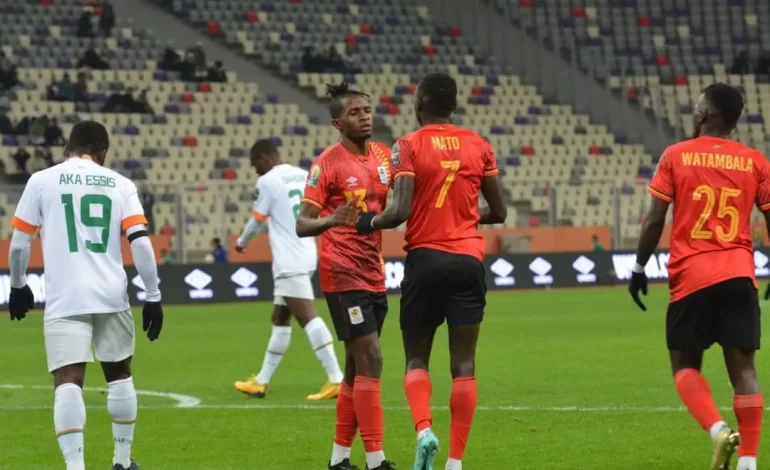The music industry in Kenya was heavily built on fusion of traditional instruments and bands. All this included a lot of singing and so in many ways, rappers did not have a platform. With the rise of clubs, clubs accommodated live bands which again closed the rappers out; I am pretty sure people were not aware that rap could be a thing.
Fast forward, the Kenyan industry caught wind of Dancehall with the rise of the Caribbean music scene. It was at this point that rappers in Kenya got a niche and therefore much of the rap music starting out in Kenya was highly influenced by sounds of the Caribbean hence the sound of some veteran artists such as Poxy Presha.
At this point, the rap culture even in the USA was creating waves and they were calling it hip-hop. At this point, hip-hop was a lot about telling stories about the struggles in the hood, drugs and life therefore it was heavy in the black community. Repackaging this into a Kenyan sound, it was easy for hip-hop rappers in the ghetto and slums to navigate and relate to these struggles. Therefore, Kenyan hip-hop essentially started in the ghetto.
This was the rise of the people from Dandora such as Kalamashaka which later birthed MauMau, Wenyeji, Ukoo Flani and many other groups. This was essentially the rooting of a solid hip-hop culture in Kenya.
Decades later, the Kenyan hip-hop scene traverses beyond just the struggle and life in the ghetto, as is in every other culture. It has welcomed gospel artists, a pop/club sound, spoken word poetry, and high-life hip-hop artists.
At this point, hip-hop has also found a way to get back to where music started in Kenya and we are having hip-hop music sampled over the traditional sounds and beats.
But who is Kenya’s king of rap? This is the kind of question that’s bound to bring arguments between fans of Kenyan rap and two names are continously pitted against each other; Octopizzo and Khaligraph Jones.
Lets Do A Review

From Kayole, Nairobi celebrated Kenyan rapper Khaligraph Jones is arguably one of the best in Africa today. On the other hand, hip-hop artist, activist, and youth ambassador Octopizzo is also a champion in rap and uses his songs to address poverty, tribal wars, and issues concerning the youth. Media and fans have been comparing the two for a long time, with each justifying why their favorite artist is the best.
In this article, we review some of their achievements over the past few years.
Musical Strategy
Khaligraph`s strategy is to make sure he’s always hot on the streets. By constantly releasing music, Khaligraph makes sure he is in constant rotation since deejays and radio stations are always looking for new catchy music to play.
When you are hot on the streets, event organisers will always be looking for you to add you to their line-up.
More often than not, Khaligraph’s music cuts across audiences. In as much as he makes music for the streets, you will always come across them in music charts in Tanzania, South Africa and Nigeria.
Octopizzo, on the other hand, takes time to release new music. The Kibera-bred rapper seems to be keen on the international market at the expense of his Kenyan fans.
Perhaps this would explain the high-class nature of his videos and why he puts his music on platforms such as iTunes, Tidal and Deezer.
Of course, Octopizzo puts his music in these places because he wants to make some extra cash.
I honestly don’t think Khaligraph was not even aware of these platforms when he had started buzzing, since his music is meant for the streets but he has caught up in the recent years.
As such, it does not come as a surprise that he’s the one first one who came out to criticize radio presenters for lack of airplay. They are the middlemen who ensure he’s hot on the streets.
Some believe that Khaligraph is making a killing since he always has more local gigs than Octopizzo who is ever having global tours.
You could also argue that Octopizzo makes more money in his few foreign gigs combined to the many that Papa Jones is getting locally.
Awards and Nominations

In 2020, Khaligraph made history after receiving his first BET Nomination in The Best International Flow Category. In October 2018, He won the Best Rap Act of the Year at the fifth edition of the Annual African Muzik Magazine Awards 2018 (Afrimma). In addition, Papa Jones scooped the best Hip Hop act at Sound City MVP Awards in January 2020.
On the other hand, Octo also made history in 2020, after making a cut for the Grammy consideration list in the; Record of the year category for his song Another day, Best Melodic Rap for Kamikaze and Another Day, as well as Best Rap Performance Category for Che Che and Wakiritho ft Sailors. In 2012, Octopizzo was nominated for Insyder Awards and for two categories at the Kisima Awards 2012; Artist of the Year category as well as Best Hip Hop Video Of the Year.
In addition, he was nominated as Best Male Artist of the year during the 2012 Coastal Nzumari Awards, which he won. In 2016, Octo won the Comeback Artist of the Year for Bigwa Music Award.
Albums
As accredited lyrists, both artists have a strong discography to back their quest to be crowned the king of rap in Kenya. Octopizzo released ‘The Come Up Vol.1’ in 2008, ‘Chocolate City’ and ‘Elcasino’ in 2014, ‘L.D.P.C’ IN 2015, ‘Refugeenius’ in 2016, ‘Next Year’ in 2018, ‘Jungle Fever’ in 2020, Fuego in 2021 and Lamu Nights in 2022 which is his latest. On the other hand, Khaligraph released ‘Autograph’ in 2014, ‘Eff Off’ in 2015, ‘Testimony 1990’ in 2018, and ‘The Take Over (Mixtape)’ in 2020 and his latest “Invisible Currency” which he released on March 1st 2022.

Online Streams
Both artists have been using YouTube as a top platform to upload most of their music. Khaligraph’s YouTube channel which premiered on 20th July 2012 currently has 85,948,422views. On the other hand, Octopizzo’s channel which started on 13 April 2012 has 63,614,421 views.
Social Media Followers
Both artists have been using their social media platforms to communicate with their fans. Khaligraph has 2.1 million followers on Instagram while Octopizzo has around 3.8m followers. On Twitter, Khaligraph has over 290,000 followers with Octopizzo following closely with 242,000 followers.


